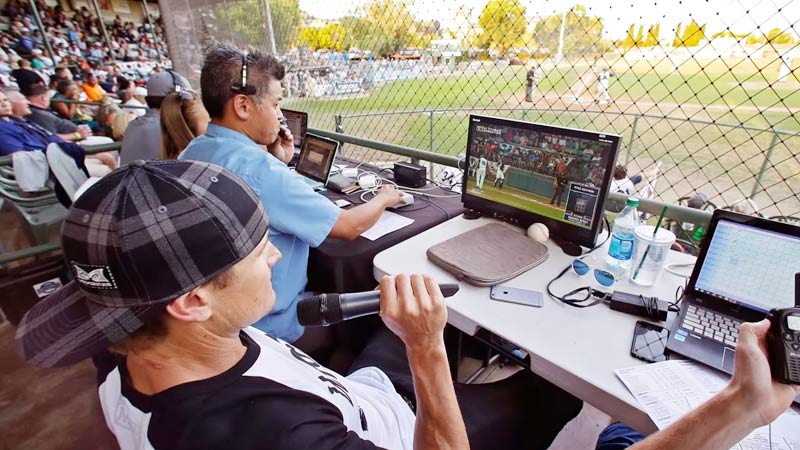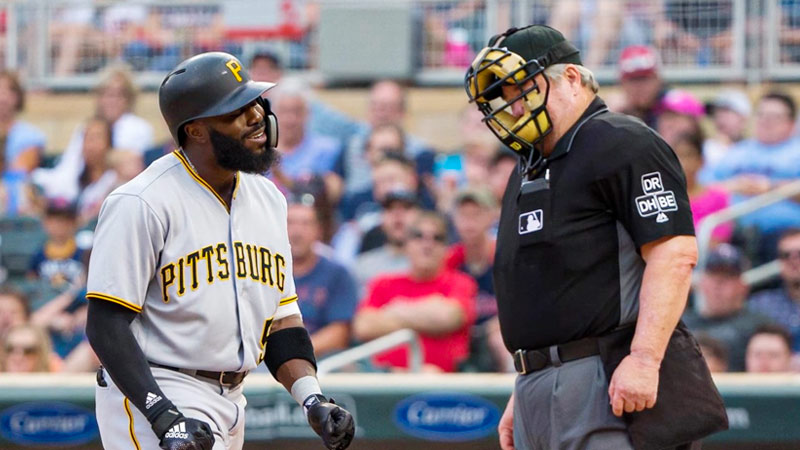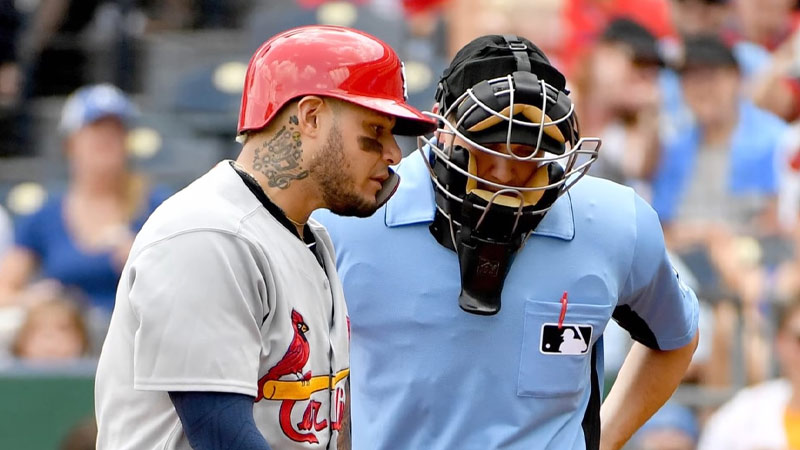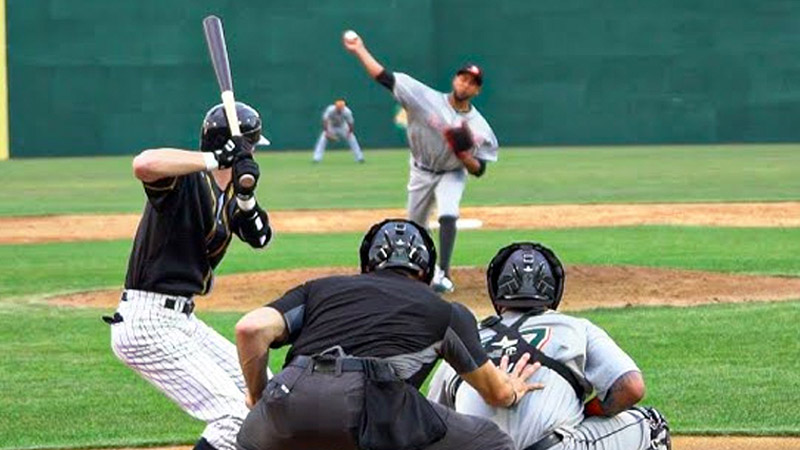The advent of robot umpires in sports, particularly in baseball, has sparked debates on the potential drawbacks of replacing human officials with technology.
While proponents argue for increased accuracy and impartiality, detractors raise concerns about the loss of the human element, the erosion of tradition, and challenges associated with adaptation.
This shift could disrupt the emotional connection fans have with the game, eliminate the authentic unpredictability of human judgment calls, and raise ethical questions regarding job displacement.
As the allure of sports lies in its rich history and emotional resonance, the push for robot umpires prompts reflection on the delicate balance between technological innovation and preserving the essence of the game.
Why Robot Umpires Are Bad?
Robot umpires, despite their potential benefits, pose several limitations that make them questionable for the game of baseball.
While the idea of introducing technology to ensure accuracy in umpiring decisions is appealing, there are key aspects that make the implementation of robot umpires problematic.
Here are the reasons why robot umpires are considered to be bad:
Elimination of Human Element
One of the fundamental aspects of baseball is the human element, including the umpire’s subjective judgment.
Umpires have always been an integral part of the game, making split-second decisions based on their experience and understanding of the sport.
Introducing robot umpires would eliminate this human element, potentially robbing the game of its traditional charm and the unpredictable nature of human judgment.
Complexity of Calls
Baseball involves a wide range of calls, including balls, strikes, foul balls, and check swings.
The game’s complexity makes it challenging for a robot umpire to accurately and consistently make these calls.
Factors such as pitch framing, varying strike zones among players, and the interpretation of borderline calls are all aspects that require the nuanced judgment of a human umpire.
Adaptability to Game Dynamics
Baseball is a dynamic game with various playing styles, strategies, and evolving trends. A robot umpire might struggle to adapt to these changing dynamics.
Human umpires often adjust their calls based on the flow of the game and the performance of the players involved.
A rigid automated system might not possess the flexibility needed to navigate the intricacies of each unique match.
Unintended Consequences of Strategy
Implementing robot umpires could potentially alter the strategies employed by players and teams.
For example, if players know that the strike zone is consistently called by a machine, they might adapt their approaches accordingly, potentially leading to a shift in the fundamental dynamics of the game.
This unintended consequence could impact the sport’s traditional strategies and tactics.
Technical Limitations

Technology, while advanced, is not infallible. Technical glitches, malfunctions, or inaccuracies in the system could lead to controversial decisions that might affect the outcome of the game.
Unlike human umpires who can incorporate their experience and judgment to make on-the-spot adjustments, a malfunctioning robot umpire might be incapable of rectifying errors promptly.
Resistance from Traditionalists and Fans
Baseball has a rich history, and many fans and players appreciate the traditional aspects of the game.
Introducing robot umpires could face resistance from those who value the sport’s heritage and the role of human umpires in its history.
The game’s appeal lies not only in its athletic competition but also in its cultural and emotional connections, which may be jeopardized by the introduction of technology in officiating.
Benefits of Using Robot Umpires
Despite the concerns and limitations, there are potential benefits to using robot umpires in baseball.
It’s important to explore the positive aspects that could enhance the game and contribute to a fairer and more accurate officiating system.
Here are some potential benefits:
Consistency
Robot umpires can provide a consistent strike zone, eliminating variability that may exist among human umpires.
This consistency ensures that players are judged by the same standards throughout the game, reducing the impact of individual umpire interpretation on the outcome.
Elimination of Bias
Human umpires, like any individuals, may inadvertently introduce bias into their decisions. Robot umpires, programmed to follow specific rules and algorithms, can potentially eliminate bias related to factors such as player reputation, team affiliation, or personal preferences.
Accuracy in Ball and Strike Calls
The precision of technology can lead to more accurate ball and strike calls. With advanced tracking systems and sensors, robot umpires can determine the position of the ball relative to the strike zone more precisely than the human eye, reducing the likelihood of errors in critical moments of the game.
Quick and Objective Decision-Making

Robot umpires can make split-second decisions without the emotional or subjective considerations that may affect human umpires.
This could result in faster and more objective decision-making, potentially speeding up the pace of the game.
Improved Player-Referee Relations
Removing the subjective judgment of human umpires may lead to fewer disputes and confrontations between players and referees.
A more objective officiating system could contribute to better player-referee relations and reduce the risk of conflicts on the field.
Enhanced Fan Experience
With accurate and consistent calls, the fan experience may improve as controversies related to questionable umpiring decisions decrease.
This could lead to a more satisfying and enjoyable experience for both casual and dedicated baseball fans.
Data and Analytics Integration
Robot umpires can generate a wealth of data related to player performance, pitch tracking, and overall game dynamics.
This data can be valuable for teams, analysts, and fans, providing insights that can enhance understanding and appreciation of the game.
Adaptability to Rule Changes
As the rules of baseball evolve, robot umpires can quickly adapt to these changes. Their programming can be updated to reflect modifications in the strike zone or other rule adjustments, ensuring that the officiating system stays in line with the latest regulations.
How Do Robo Umps Work?
Robot umpires, also known as automated or electronic strike zones, utilize advanced technology to make accurate and consistent ball and strike calls in baseball games.
The primary components of this system include tracking technology, data analysis algorithms, and real-time communication tools.
Here’s a breakdown of how robo-umps work:
Pitch Tracking Technology
The core of the robot umpire system involves sophisticated pitch-tracking technology.
High-speed cameras and sensors are strategically placed around the baseball field to capture the trajectory and movement of each pitch.
These cameras are often positioned in fixed locations, such as behind home plate and along the baselines, to provide comprehensive coverage.
Data Capture and Analysis
The captured data, including the velocity, spin rate, and trajectory of the pitched ball, is fed into powerful computer systems.
Advanced algorithms analyze this information to determine whether the pitch passed through the strike zone as defined by the official rules of the game.
The strike zone is a three-dimensional area over home plate, extending from the batter’s knees to the midpoint between the shoulders and the top of the pants.
Calibration and Customization
Before a game, the system undergoes calibration to ensure accuracy. This calibration process may involve adjusting the strike zone dimensions based on the specific height of each batter.
The system can be customized to accommodate variations in individual player stances, ensuring that the strike zone adapts to the unique characteristics of each batter.
Real-Time Decision-Making
The robot umpire system is designed to make real-time decisions on whether a pitch is a ball or a strike.
The analysis is swift, typically occurring within a fraction of a second after the ball crosses the plate.
The instantaneous nature of the system allows for quick and seamless integration into the flow of the game.
Communication with On-Field Umpires

In most implementations, the robot umpire system works in conjunction with on-field human umpires.
While the automated system makes the ball and strike calls, the on-field umpire is responsible for overseeing other aspects of the game, such as base running, fielding, and enforcing other rules.
The on-field umpire may wear an earpiece and receive instant notifications regarding the automated strike calls.
Display for Players and Fans
To maintain transparency and ensure that players and fans are informed, many systems include a display that indicates the call made by the robot umpire.
This display, often visible on the stadium scoreboard or on television broadcasts, shows whether a pitch was called a ball or a strike.
Continuous Improvement and Updates
Robot umpire systems are subject to continuous improvement and updates. As technology advances and more data is collected, algorithms can be refined to enhance accuracy and address any shortcomings.
Updates may also be implemented to accommodate changes in the rules of the game or to address feedback from players, coaches, and officials.
Electronic Umpires in Baseball
Electronic umpires, often referred to as robot or automated umpires, represent a technological advancement in baseball officiating.
These systems aim to improve the accuracy and consistency of ball and strike calls while maintaining the overall integrity of the game.
Here are some key points about electronic umpires in baseball:
Pitch Tracking Technology
Electronic umpires rely on advanced pitch-tracking technology, including high-speed cameras and sensors strategically placed around the baseball field.
These devices capture the trajectory, velocity, and movement of each pitched ball, providing detailed data for analysis.
Automated Data Analysis

The captured data is processed through sophisticated algorithms designed to determine whether a pitch is a ball or a strike based on the official rules of the game.
The strike zone, a three-dimensional area over home plate, is defined by the batter’s knees, the midpoint between the shoulders and the top of the pants.
Real-Time Decision-Making
One of the primary advantages of electronic umpires is their ability to make real-time decisions.
The analysis of each pitch occurs within milliseconds after it crosses the plate, allowing for instantaneous calls without causing significant interruptions to the flow of the game.
Consistency and Accuracy
The goal of electronic umpires is to provide consistent and accurate officiating. By removing the subjective human element, these systems aim to eliminate variations in strike zone interpretation, reducing the likelihood of controversial calls and ensuring a fairer playing field.
Customization and Calibration
Electronic umpire systems can be customized and calibrated to accommodate the specific characteristics of individual players.
The strike zone dimensions can be adjusted based on factors such as a batter’s height and stance, tailoring the system to the unique attributes of each player.
Integration with On-Field Umpires
While electronic umpires handle ball and strike calls, on-field human umpires continue to oversee other aspects of the game, including base running, fielding, and rule enforcement.
The on-field umpire may wear an earpiece to receive instant notifications regarding the automated strike calls.
Transparency for Players and Fans
To maintain transparency, electronic umpire systems often include a display that indicates the call made for each pitch.
This information can be visible on the stadium scoreboard or through television broadcasts, allowing players, coaches, and fans to stay informed about the officiating decisions.
Continuous Improvement and Adaptability
Electronic umpire systems are subject to continuous improvement and updates. As technology advances and more data is collected, algorithms can be refined to enhance accuracy and address any challenges. These systems can also be adapted to changes in the rules of the game.
Challenges and Considerations
Despite the potential benefits, the introduction of electronic umpires in baseball is not without challenges.
Concerns include the elimination of the human element, potential impacts on game strategy, and the need for careful calibration to ensure accurate and fair calls.
MLB Automated Strike Zone

Major League Baseball (MLB) has been experimenting with and testing automated strike zones, often referred to as the Automated Ball-Strike System (ABS) or electronic strike zone.
This system utilizes technology to determine balls and strikes, reducing the reliance on human umpires for making these calls.
Here are some key points related to MLB’s implementation of the automated strike zone:
Implementation in Minor Leagues
MLB began testing the automated strike zone in the minor leagues as a way to assess its effectiveness and work out any potential issues before considering its implementation at the major league level.
The use of this technology in the minors allowed for valuable data collection and adjustments to improve accuracy.
Limited Use in Spring Training and All-Star Futures Game
MLB introduced the automated strike zone in select spring training games and the All-Star Futures Game, providing players, teams, and fans with a glimpse of how the system functions in a real-game scenario. These instances were viewed as opportunities to evaluate the system’s performance.
Feedback and Adjustments
Throughout the testing phase, MLB collected feedback from players, coaches, and umpires regarding their experiences with the automated strike zone.
This feedback was crucial for making adjustments to the system, addressing concerns, and refining the technology for better accuracy and acceptance.
Potential Full Implementation in the MLB
The ultimate goal of MLB’s experimentation with the automated strike zone is to potentially implement it at the major league level.
However, any decision to fully adopt the system in regular-season MLB games would likely involve thorough consideration of the technology’s performance, acceptance by stakeholders, and impact on the overall dynamics of the game.
Integration with Human Umpires
In scenarios where the automated strike zone was tested, there was often an on-field umpire who could still make calls for plays other than balls and strikes.
This hybrid approach aimed to preserve some aspects of the traditional human element in officiating while utilizing technology for the strike zone.
Challenges and Controversies
The introduction of an automated strike zone has not been without challenges and controversies.
There have been debates over the impact on the game’s traditional elements, concerns about the consistency of the technology, and discussions about potential adjustments needed to accommodate different player stances and body sizes.
FAQS
What is the accuracy of robot umpires, and how does it compare to human umpires?
Full Automated Ball-Strike System (ABS) not only completely removes errors, but it also challenges the accuracy of today’s home-plate umpires, who were measured at 97.6% accuracy last.
Are robot umpires being used in Minor League Baseball?
Yes, there have been experiments with robot umpires in Minor League Baseball as part of testing and refining the technology before potential implementation at higher levels.
What’s the status of robot umpires in 2024?
As of 2024, the use of robot umpires is an ongoing topic of discussion and testing in baseball. It involves considerations about accuracy, player and fan reactions, and potential impacts on the game.
What challenges do robot umpires face in accurately calling pitches?
Robot umpires may struggle with the complexity of various calls, such as adjusting to individual player stances, handling pitch framing, and interpreting borderline calls consistently.
Is there resistance from traditionalists and fans to the idea of robot umpires?
Yes, many traditionalists and fans resist the idea of robot umpires, expressing concerns that the introduction of technology may erode the cultural and historical aspects that make baseball unique.
Last Words
The prospect of robot umpires in baseball raises significant concerns. Beyond the potential for technical glitches and the loss of the human touch, the negative impact on the game’s dynamics, player strategies, and the traditional charm of baseball cannot be ignored.
The sport thrives on the nuanced judgment of experienced umpires, adapting to the ever-evolving nature of play.
Robot umpires risk stripping away the emotional connections fans and players share with the game, replacing them with a clinical and predictable officiating system.
Preserving the unique spirit and authenticity of baseball necessitates careful consideration before surrendering the field entirely to automated technologies.







